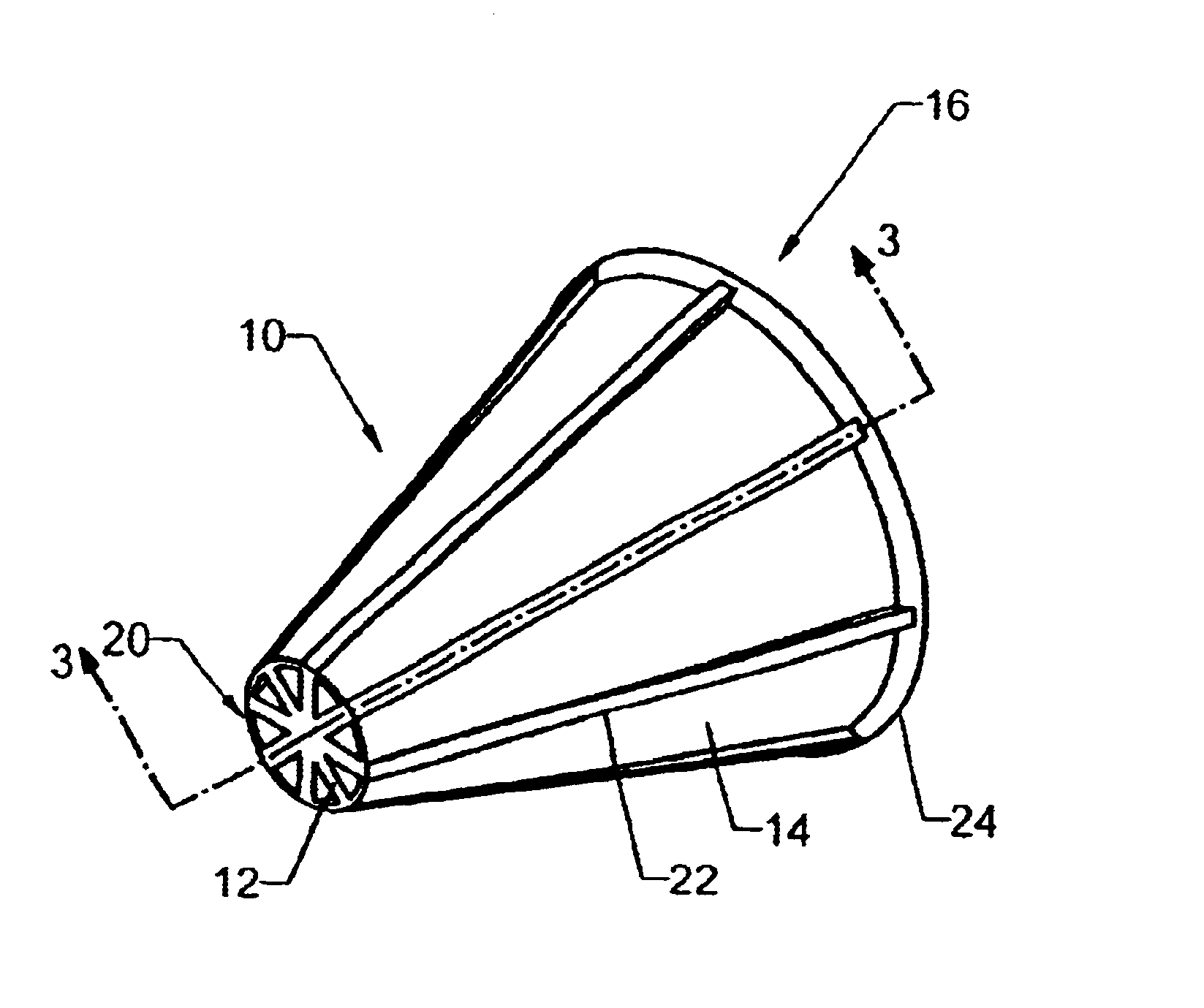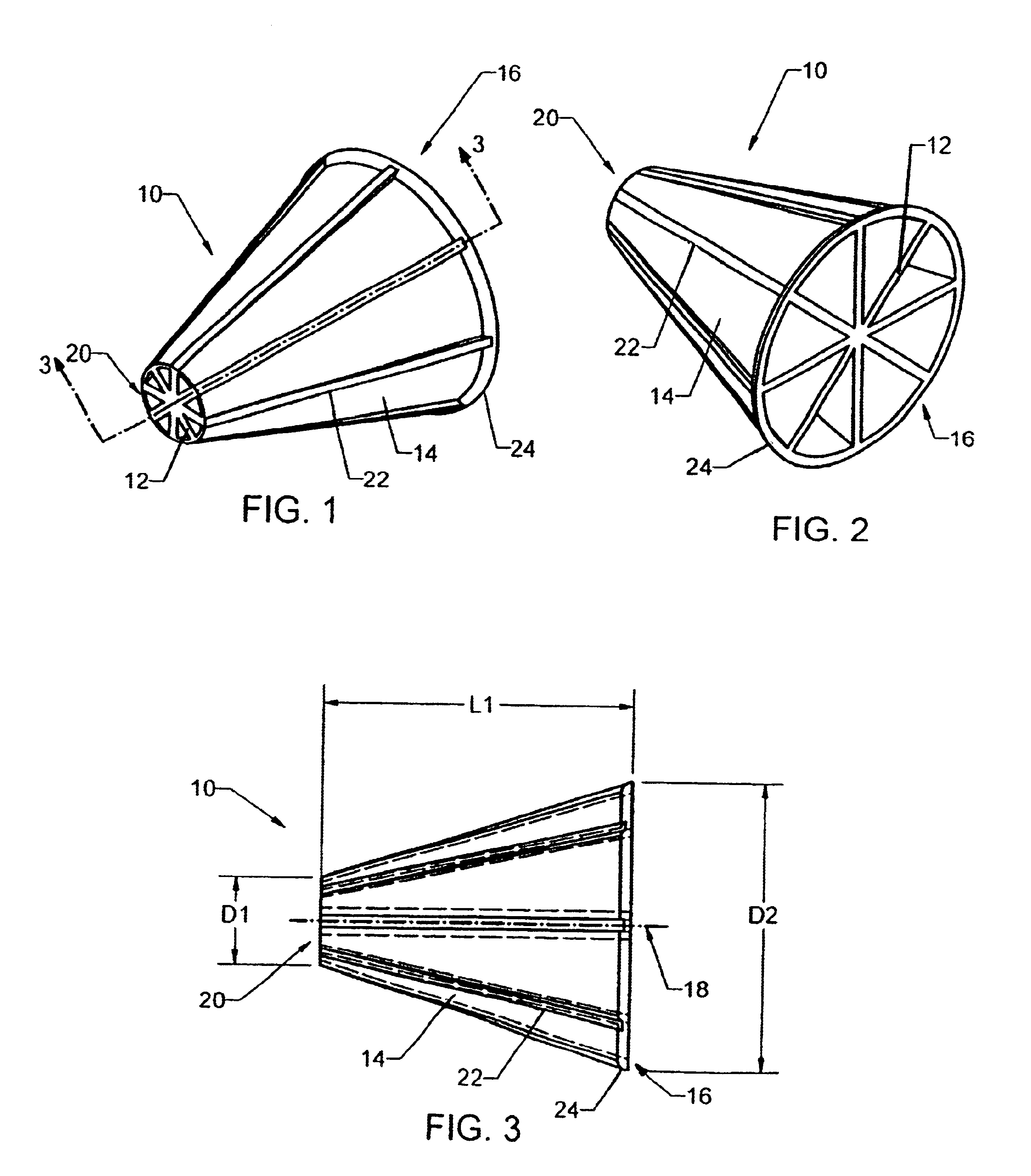Flow-through media
a technology of flow-through media and support media, which is applied in the direction of biological water/sewage treatment, filtration separation, separation processes, etc., can solve the problems of “dead zone” in the system, weakening the shaft, and allowing bacteria
- Summary
- Abstract
- Description
- Claims
- Application Information
AI Technical Summary
Benefits of technology
Problems solved by technology
Method used
Image
Examples
Embodiment Construction
Now with more particular reference to the drawings, FIGS. 1, 2 and 3 show one embodiment of the flow-through media element 10 of the present invention. FIG. 2 shows another perspective view of the embodiment of the media element in FIG. 1. FIG. 3 shows a sectional view taken along line 3—3 of the embodiment of the media element shown in FIG. 1. The outer wall 14 of the media element 10 defines a truncated conical shape having a central longitudinal axis 18. This embodiment contains eight internal ribs 12. The internal ribs 12 extend radially from the central longitudinal axis 18 and adjoin with the outer wall 14 of the media element 10, and extend longitudinally from a first end 20 to a second end 16 of the media element 10. In this embodiment, the internal ribs 12 are equidistant from each other and are of similar length and width.
This embodiment also contains a plurality of external ribs 22 on the outer wall. These external ribs 22 may be continuations of the internal ribs which e...
PUM
| Property | Measurement | Unit |
|---|---|---|
| Fraction | aaaaa | aaaaa |
| Fraction | aaaaa | aaaaa |
| Angle | aaaaa | aaaaa |
Abstract
Description
Claims
Application Information
 Login to View More
Login to View More - R&D
- Intellectual Property
- Life Sciences
- Materials
- Tech Scout
- Unparalleled Data Quality
- Higher Quality Content
- 60% Fewer Hallucinations
Browse by: Latest US Patents, China's latest patents, Technical Efficacy Thesaurus, Application Domain, Technology Topic, Popular Technical Reports.
© 2025 PatSnap. All rights reserved.Legal|Privacy policy|Modern Slavery Act Transparency Statement|Sitemap|About US| Contact US: help@patsnap.com



